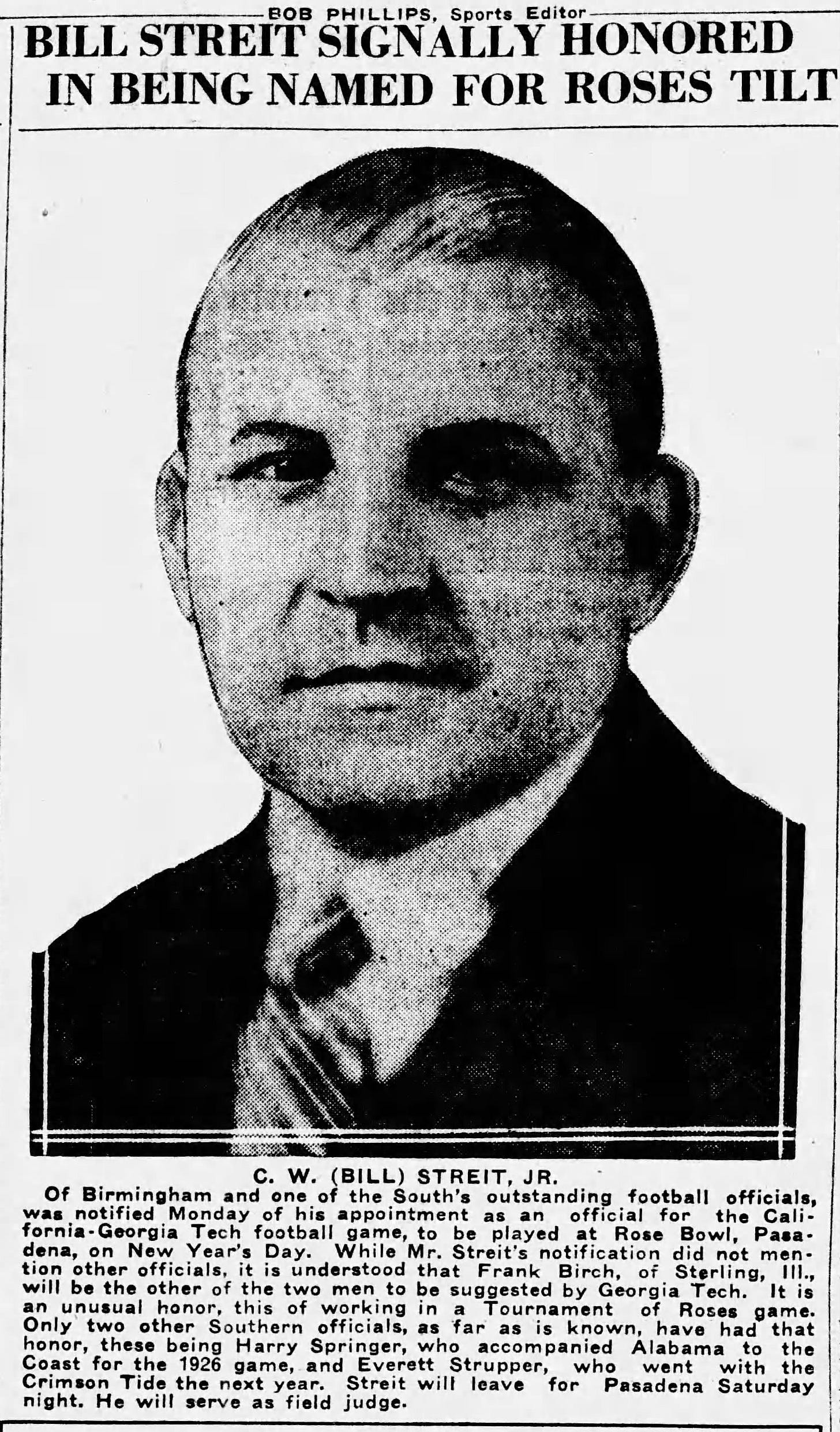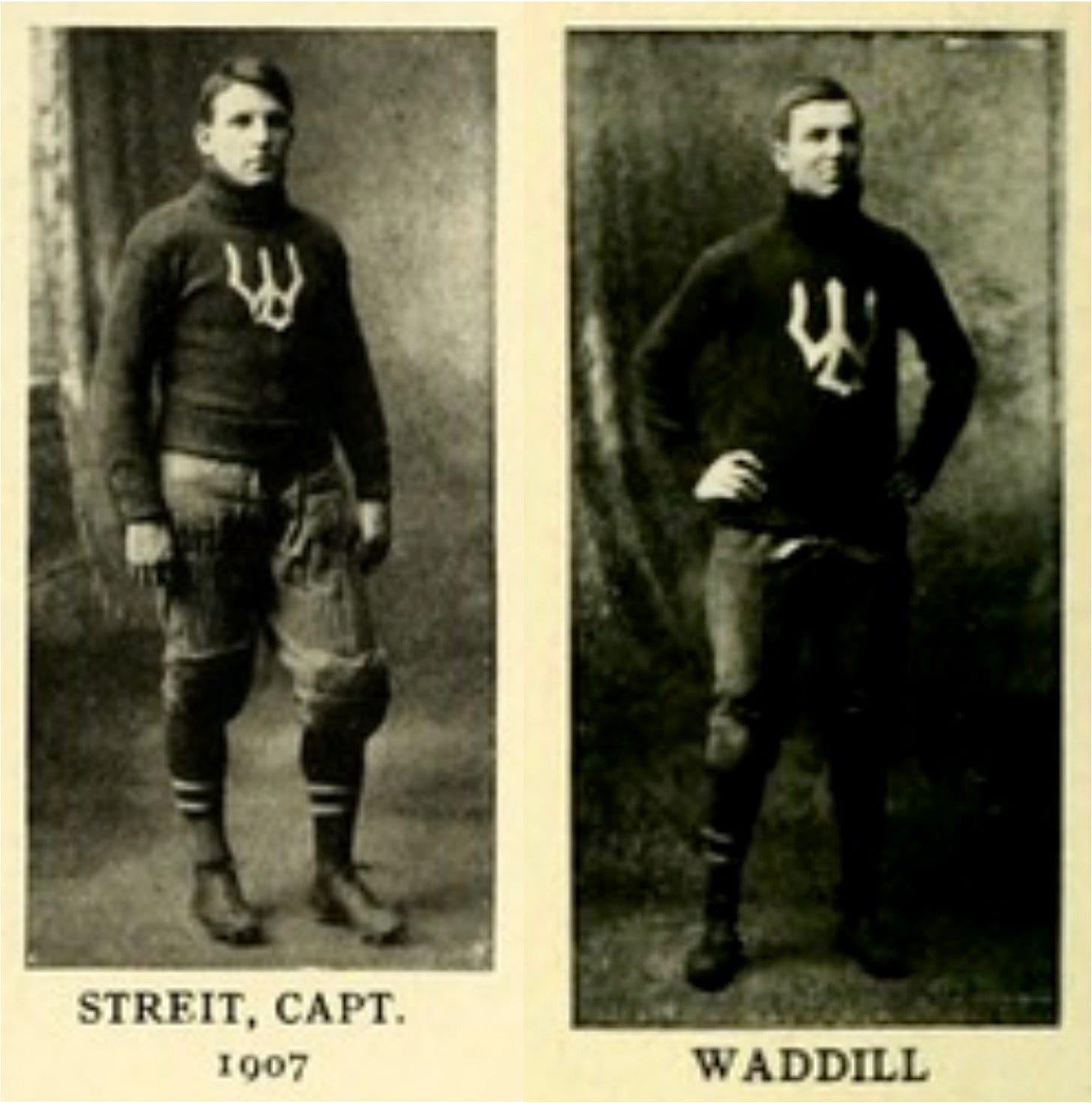Today's Tidbit... Punting From Behind A Barbed Wire Fence
Charles William "Bill" or "C. W." Streit played football at Auburn (1904-1905) and Washington & Lee (1907-1908) before becoming an official handling football, wrestling, track and field, and a few other sports. For decades, he helped direct the U.S. Olympic wrestling and track teams. He was also the field judge for the 1929 Rose Bowl when "Wrong Way" Riegels got turned around.

However, this Tidbit is not about Streit’s role as an official, but Streit's response when he was among 24 football authorities asked in 1926 to recall the "Most Spectacular Play" they ever saw. Streit's answer harkened to a Thanksgiving Day game in 1907 when he captained the Washington and Lee Presidents against the Bucknell Bison at the Lynchburg (VA) Fair Grounds.
As Striet recalled, it was a nip and tuck game as both offenses moved the ball in the center of the field but struggled to penetrate the 10-yard line. However, Bucknell once drove to the 3-yard line before turning the ball over on downs.
As the left halfback and captain, Streit wanted to punt on first down to get out from under the goal posts. The problem was that a barbed wire fence stood behind and close enough to the goal line that Striet was concerned about the punt getting blocked if the punter stood in front of the fence. Streit asked the referee to move the ball to the other side of the field, where the fence stood further from the goal line, but the referee refused his request. (If you have not already read the recent Tidbit When Out Of Bounds Balls Were Live, it might be worth reading now.)
Since the referee was following the rules and unwilling to move the ball, Streit also opted to play within the rules. At the time, football fields did not have end lines or end zones, so Streit instructed his left end and punter, R. A. Waddill, to punt from the far side of the barbed wire fence. That led Waddill to exit through the fence gate, lock it behind himself, and stand at his regular punting depth behind the barbed wire fence. While unusual, everything about Waddill's positioning was perfectly legal under the 1907 rules.
The 1907 rules also allowed all members of the punting team to recover and advance a punt if they could get to the ball before the return man. At the snap, Waddill's teammates let the defense through and ran downfield to cover the punt. Meanwhile, the Bucknell linemen ran up to the fence and stopped, looking for a way to get to Waddill. Waddill took his sweet time before booting the ball deep downfield, where one of his teammates recovered it. Bucknell protested the play, but the referee, who had been a stickler about the rules when refusing to relocate that ball, had to admit that W&L’s punt was within the rules.
Unfortunately for the Generals fans, Waddill had several booming punts that day, but he also fielded a Bucknell punt at the 1-yard line, stepped behind the goal line, and was tackled for a safety. That play allowed Bucknell to win the game 2-0.
Bonus Content
As shown below, Washington and Lee’s yearbook had some great football artwork during this period.
Football Archaeology is reader-supported. Click here to buy one of my books or otherwise support the site.








Great storytelling and story. Lucky for W&J that the snap went over the fence instead of hitting it on the way back. That could have really taken the air out of the ball! in more ways than one.
Lynchburg, VA fair grounds #ForgottenFields https://flic.kr/p/2j5h9tW